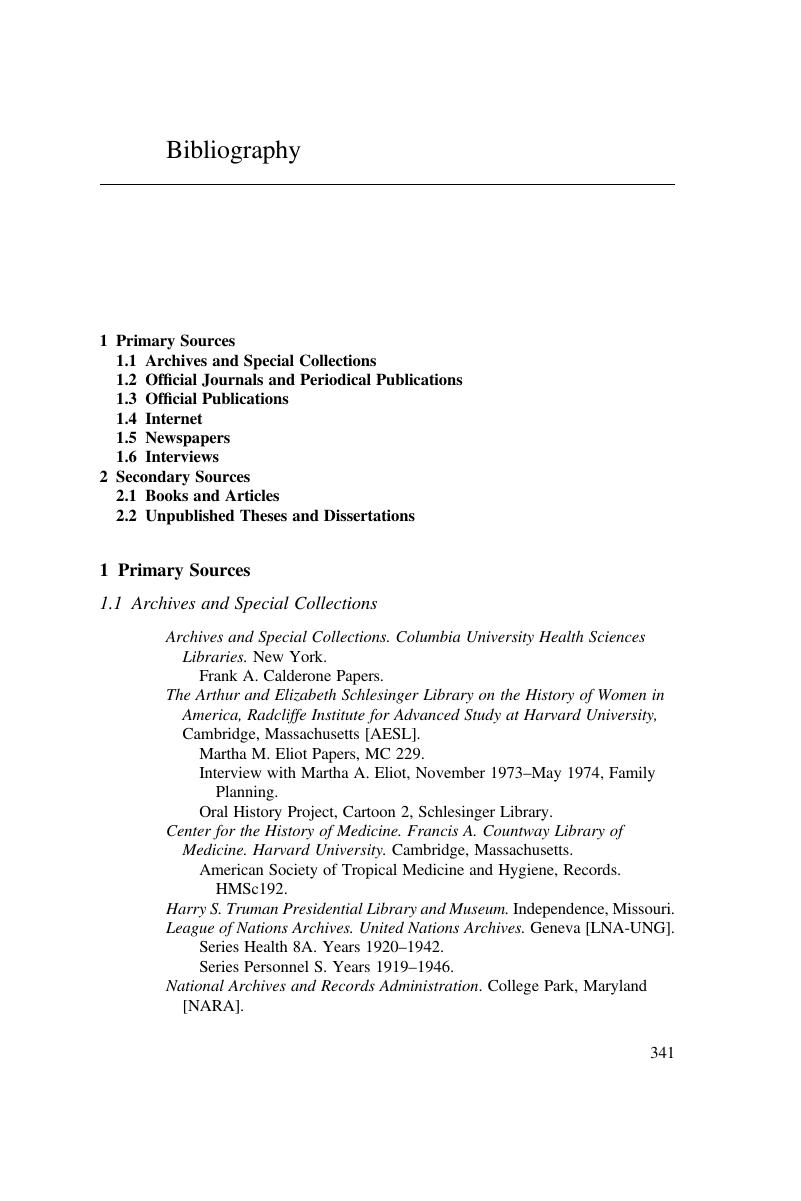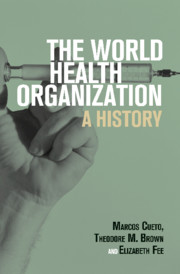Book contents
- The World Health Organization
- Global Health Histories
- The World Health Organization
- Copyright page
- Dedication
- Contents
- Figures
- Tables
- Acknowledgments
- Abbreviations
- Introduction: The World Health Organization and the Dilemmas of the Cold War and the Post–Cold War Periods
- 1 The Making of an International Health Establishment
- 2 The Birth of the World Health Organization, 1945–1948
- 3 The Start-Up Years, 1948–1955
- 4 The Cold War and Eradication
- 5 Overcoming the Warming of the Cold War: Smallpox Eradication
- 6 The Transition from “Family Planning” to “Sexual and Reproductive Rights”
- 7 The Vicissitudes of Primary Health Care
- 8 The Response to the HIV/AIDS Pandemic
- 9 An Embattled Director-General and the Persistence of the WHO
- 10 The Competitive World of Global Health
- 11 The World Health Organization in the Second Decade of the Twenty-First Century
- Bibliography
- Index
- References
Bibliography
Published online by Cambridge University Press: 01 April 2019
- The World Health Organization
- Global Health Histories
- The World Health Organization
- Copyright page
- Dedication
- Contents
- Figures
- Tables
- Acknowledgments
- Abbreviations
- Introduction: The World Health Organization and the Dilemmas of the Cold War and the Post–Cold War Periods
- 1 The Making of an International Health Establishment
- 2 The Birth of the World Health Organization, 1945–1948
- 3 The Start-Up Years, 1948–1955
- 4 The Cold War and Eradication
- 5 Overcoming the Warming of the Cold War: Smallpox Eradication
- 6 The Transition from “Family Planning” to “Sexual and Reproductive Rights”
- 7 The Vicissitudes of Primary Health Care
- 8 The Response to the HIV/AIDS Pandemic
- 9 An Embattled Director-General and the Persistence of the WHO
- 10 The Competitive World of Global Health
- 11 The World Health Organization in the Second Decade of the Twenty-First Century
- Bibliography
- Index
- References
Summary

- Type
- Chapter
- Information
- The World Health OrganizationA History, pp. 341 - 366Publisher: Cambridge University PressPrint publication year: 2019



